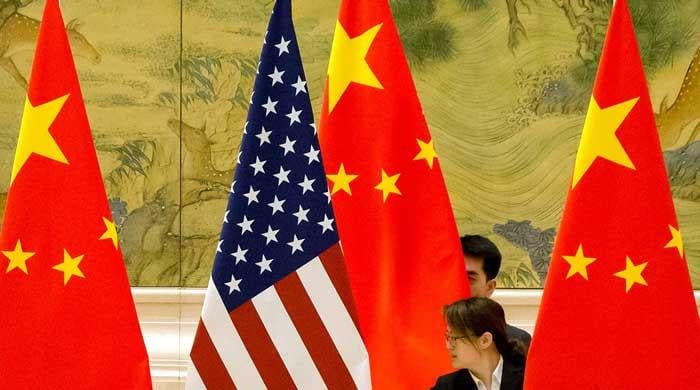Facebook, Dopamine and InstaGrat
How countries respond to technology challenges is typical of vulgarity and lack of sophistication
November 26, 2019
InstaGrat. It is not quite the same as Instagram, where we can put up pictures of what we want the world to see of us.
InstaGrat is the instant gratification that is engineered into almost every social media application that we use today. It is that soft, sudden feeling of ‘aah’ that comes and goes, without quite making the same mess or causing all the same guilt of other sources of dopamine-shot releasing activities that boomers, Gen Xers and even nominally normal millennial creatures used to be used to.
Today, every human being within six feet of a smartphone and forty five miles of a 4G cell tower, has access to InstaGrat. And most of us are ODing on InstaGrat without ever knowing who we’re working for as we furiously type out our rage against the machine on Facebook, or whilst we jealously click ‘Like’ on Insta videos of beautiful people with eyelashes thick as a brick, and cheekbones higher than the Himalayas, or as we mass forward the latest outrageous video of yet another injustice in this relentlessly cruel world over WhatsApp. With every click, every forward, and every expression of how we feel, we feel like we feel better (we don’t really). That’s InstaGrat.
The human physiology that Mark Zuckerberg, who runs Facebook, Instagram, and WhatsApp, or Jack Dorsey, who runs Twitter, are exploiting is not particularly complicated, once we consider the wider ecosystem in which their algorithms are operating. Sean Parker, who founded Napster and was the first president of Facebook explains it in the best and most direct way possible: "The thought process that went into building these applications was: 'How do we consume as much of your time and conscious attention as possible?’".
A global army of ambitious technology entrepreneurs are being egged on, and cheerled into an abyss of micro-manipulations and macro-catastrophe, by venture capitalists and Wall Street bankers, eagerly seeking the next Snapchat or the next TikTok, with little or no concern for how these technological applications are affecting individual and collective behaviors.
Of course, like any slow motion disaster, both state and society are so poorly equipped to handle the challenges posed by this phenomenon, that any attempt at addressing the problem likely only exacerbates it. For one, the easiest way to draw regulatory or legislative attention to these problems is to demonize the companies and individuals involved. Strangely, and paradoxically, this satisfies our insatiable need for InstaGrat, but it doesn’t actually solve the underlying problems that are driving us over the cliff, way, way over the speed limit.
The role of social media in voice creation and amplification for ordinary people all around the world is no less revolutionary, at least in theory, than Gutenberg’s printing press. But the human technology that fuels the magnitude of social media’s impact seems as or more likely to be exploited by wealthy people at the expense of the non-wealthy quite exactly in the same way as any technological revolution ever did before, from the printing press, to the steam engine, to the radio and television.
Chamath Palihapitiya, who was once responsible for ‘user growth’ at Facebook, recently explained his personal guilt about being associated with the social media business in rather stark and extreme terms, suggesting that the “short-term, dopamine-driven feedback loops that we have created are destroying how society works”. And if you take a long hard look at some of the evidence, this hyperbole may not be all wrong.
Last year, Trevor Haynes, a researcher at the Department of Neurobiology at Harvard Medical School, wrote about dopamine and smartphones, claiming that social media applications essentially “leverage the very same neural circuitry used by slot machines and cocaine to keep us using their products as much as possible”. Now consider this: slot machines are heavily regulated by gaming or gambling commissions in some nations and entirely banned in many others. Cocaine, on the other hand, is a banned, illegal substance pretty much everywhere on planet earth. Yet there is hardly any country on the very same planet where social media is fully regulated (unless of course, we consider North Korea, or Iran, or China to be models of regulation).
The China question especially interesting, especially from the vantage point of Pakistan. The newest global fad among social media platforms is an application called TikTok. TikTok has about 12 million Pakistani users, which is nearly twice the number of Twitter users in the country – despite having only existed since 2017 (Twitter is about eleven years older, having been founded in 2006). So many of the world’s most important people and pressing issues use Twitter as a source and an amplifier, but hardly any use TikTok. Why? Because unlike Twitter, TikTok is actually fun. It is video, after video, after video of inane (and sometimes insane) young people having fun.
Since it is all about the ‘fun’, it is explicitly apolitical, or at least it says it wants to be. This matters little in the United States, where earlier this month, the interagency Committee on Foreign Investment in the United States (CFIUS) initiated a national security investigation into TikTok. The ostensible reason is around concerns about user privacy, but this is about as believable as Alice Well’s anguish about Pakistan’s long-term external debt profile. The real reason that any technology company ends up in ostensibly hot water in the US is the ability of an antagonist to link the company to either Russia or China.
The national security angle to how countries respond to technology challenges is typical of the vulgarity and lack of sophistication that defines how public imagination is engaged on big tech’s threat to our individual and collective well being and safety. Any country can manipulate the algorithms deployed by companies like Snapchat, or WhatsApp, or Twitter. The real question is whether governments and societies are willing to engage in a serious conversation about InstaGrat. This is unlikely.
The constant highs that social media applications offer through instant gratification undermine our ability to engage with information beyond the very temporary and superficial level. This means that any given viral video can have massive impact in terms of how fast it reaches people. Sometimes, this will produce ‘instant’ results – like the closure of a restaurant or a medicine store after viral videos of wrongdoing by such establishments surface. But these ‘results’ will not and cannot produce better legislation or regulation, or more vigilant enforcement of existing laws or rules. Decision-makers are just like all the rest of us. They too are being re-wired like the rest of us, and will therefore respond, and react more readily to the ‘instant’ notification, rather than the wider, creeping signs that scream out for reform.
InstaGrat heightens and transforms the micro-outrage into the macro-moment. But a moment is just that: a blip in time. Societies and countries are at sea in the face of a blitzkrieg of algorithms that have all the potential to positively transform the very micro-interactions within the human physiology that they have deconstructed and cracked. But this potential is being lost to the allure of the InstaGrat. We do not need a hashtag to do better. We just need to learn to say no to instant gratification. Can you say no?
The writer is an analyst and commentator.
Originally published in The News









